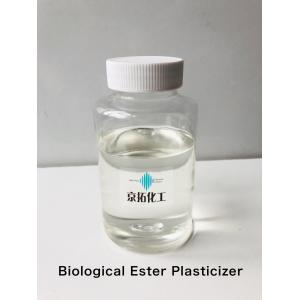Natural Transparent Phthalate Free Plasticizers High Thermal Plasticity
What are the commercially available non-phthalates?
- Terephthalate Esters and Ring Saturated Variants of Orthophthalates: These non-phthalate plasticizers are offered at a competitive price but have limited compatibility with PVC and decreased solvency vis-à-vis orthophthalates, and they are too volatile for some applications.
- Vegetable Oil Derivatives-Epoxides: There is a wide variety of this natural type of non-phthalates plasticizer. This cost competitive product has limited compatibility with PVC, decreased solvency vis-à-vis orthophthalates (triglycerides), relatively high viscosity (triglycerides), poor low temperature properties (triglycerides) and volatility (monoglycerides, esters of fatty acids).
- Citrate Esters: Citrate esters have a long history of commercial use and are also cost competitive with widely used phthalates. This natural product, however, has limited compatibility with PVC, relatively poor low temperature properties, relatively high water extractability and hydrolysis issues.
- Phosphate Esters: Used for flame retardancy, this non-phthalate plasticizer is more costly and volatile.
- Aliphatic dibasic acid esters: This is another cost competitive phthalate-free alternative that has a long history of commercial use as a plasticizer. Its plasticizing efficiency and low temperature properties are among its greatest advantages. However, it has a limited compatibility and decreased solvency vis-à-vis phthalates.
- Alkyl sulfonic acid esters: Also cost effective and with a satisfactory plasticizing efficiency, this non-phthalate plasticizer has a high specific gravity and is slightly defensive on low temperature properties. There are relatively few suppliers that distribute it.
- Trimellitate esters: Non-phthalates with a long history of commercial use as a plasticizer, trimellitate esters are more costly and contain small amounts of orthophthalates.
- Benzoate/dibenzoate esters: Benzoates have been commercially available for a long time. Monobenzoates are quite volatile, while dibenzoates have poor flow properties and relatively poor low temperature properties.
- Polyol-carboxylic acid esters: There are limited supply sources for this non-phthalate plasticizer.
- Polymeric plasticizers: There is a variety of choices ranging from low to high MW polyesters (liquids) to alloying polymers. Among its disadvantages are: high viscosity, high melt viscosity, low solvency, poor low temperature properties (some), water sensitivity (some),
Specification:
| TYPICAL PHYSICAL-CHEMICAL PROPERTIES |
| Appearace |
Transparent light yellow oily liquid |
| Chroma(Pt-Co)# |
≤40 |
| Acid value mgKOH/g |
≤0.3 |
| Heat Loss(125 oC,2 h), % |
≤0.5 |
| Density,(20°C, g/cm3) |
1.08-1.11 |
| K Viscosity(cst,40 oC) |
≤50 |
| Flash Point, oC |
≥190 |
Storage:
Handling: Provide adequate ventilation and keep away from spark, excessive heat and ignition source. Storage: Keep container tightly closed in a dry and well-ventilated place.
The storage temperature should be lower than 45°C, the viscosity will be increased significantly when the temperature fall below 15°C, if the temperature lower than 5°C, it would become creamy solid and can recovered to normal appearance while the temperature is restored to 25-40°C.
Quality standard
The product meets GB/T 5761-2006 standard with its physical and chemical properties meeting requirement in table below:
1. The user can choose any one from vifscosity number, K value ,index of average polymerizapion degree.
2. The user can confer with the manufacture if they have other index ,requirement ,on thermal stability.
